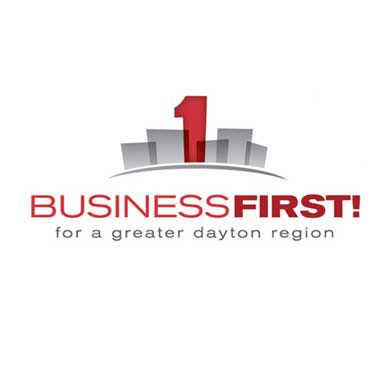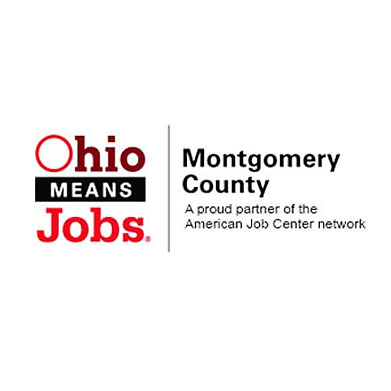Montgomery County Inventions That Changed the World and Continue to Drive Economic Growth
.jpg)
10 Nov 2025
News
Few communities can claim as many transformative inventions as Montgomery County, Ohio. From aviation and refrigeration to consumer goods and digital technology, breakthroughs made here have redefined industries and improved daily life worldwide.
These innovations have helped pioneer brand new industries and create new markets. They also generated lasting economic multipliers in manufacturing, research, logistics, and workforce development.
“Montgomery County has always been a place where new ideas take root, even if it hasn’t always gotten the recognition it deserves,” said Gwen Eberly, Economic Development and Planning Manager for Montgomery County. “So many things we rely on every day trace back to innovators right here. People sometimes say, ‘Well, if it hadn’t been invented here, it would have happened somewhere else,’ but I don’t see it that way. Our community’s economy and identity are built on a long history of creativity, hard work, and a drive to make life better. I’m proud to be part of that tradition and to support the companies and entrepreneurs who are carrying it forward.”
The Wright Brothers Transformed Global Mobility and Created Modern Aviation
In 1903, Wilbur and Orville Wright achieved the first powered, controlled flight. That breakthrough, supported by years of experimentation in Dayton, marked the beginning of the modern aviation industry.
Today, aviation contributes more than $700 billion annually to the global economy and supports over 87.7 million jobs worldwide. The Wrights’ work in Montgomery County created an industry that continues to sustain regional research, advanced manufacturing, and workforce pipelines.
The Stepladder Brought Safety And Efficiency To Households And Construction
John H. Balsey, known as the “Stepladder King,” patented the first folding stepladder in Dayton in 1870. His design improved safety in construction and everyday use, enabling safer access to elevated spaces.
Today, the global stepladder market exceeds $598 million and is projected to approach $1 billion by 2034. This invention reinforced Montgomery County’s role as a hub of practical industrial design.
The Backpack Parachute Created A New Standard In Aviation Safety
In 1919, at McCook Field, Floyd Smith tested his backpack parachute, leading to the first successful jump by Leslie Irving (imagine being the first to test a new parachute). This innovation advanced aviation safety and created new industries around both defense and recreation.
The global parachute market, valued at more than $550 million, is expected to grow steadily as applications expand into military, aerospace, and adventure sports. The invention illustrates Montgomery County’s influence on safety innovation in aviation and beyond.
Freon Made Refrigeration Safe And Scalable For Industries And Households
Thomas Midgley Jr. and Charles F. Kettering of Dayton solved one of the 20th century’s most pressing industrial challenges by creating Freon, a stable and nonflammable refrigerant. This breakthrough enabled safe refrigeration and air conditioning, transforming food storage, global trade, and quality of life for the entire world.
Today, the refrigerants market is valued at more than $24 billion globally, with North America holding a leading share. While refrigerant technology continues to evolve with sustainability in focus, Montgomery County’s contribution remains the originator of the industry.
LCD Technology Created a Platform For Digital Communications
In the 1970s, John L. Janning of NCR developed the oblique molecular alignment process that made mass production of liquid crystal displays (LCDs) possible. That innovation shaped the growth of watches, calculators, televisions, computers, mobile devices, and almost anything with a screen.
The global LCD market now exceeds $140 billion and continues to expand across industries. The Dayton region’s long-standing expertise in applied technology established a direct line to today’s digital economy.
The Bar Code Changed Retail, Logistics, And Data Systems
Paul McEnroe, an engineer with IBM and a graduate of the University of Dayton, played a leading role in the development of the Universal Product Code (UPC). First scanned in 1974, the barcode now underpins retail, logistics, and supply chain systems across the globe.
Billions of scans occur daily. The barcode printers market alone is projected to exceed $7.5 billion by 2030. This Montgomery County innovation streamlined commerce and set new global standards for efficiency.
Cheez-It Became a Global Consumer Brand With Dayton Roots
The Green & Green Company introduced Cheez-It in 1921, building on Dayton’s earlier cracker-making industry. Today, the brand generates more than $1.2 billion in annual U.S. retail sales.
The broader crackers market is valued at $24 billion and continues to grow. Cheez-It demonstrates how a Montgomery County product evolved into one of the most successful consumer snack brands in the world.
Montgomery County Continues to Advance Innovation With Modern Industry Growth
From aviation to consumer goods, Montgomery County’s track record of invention has generated significant job creation and investment returns for more than a century. Each breakthrough not only created global industries but also reinforced the county’s role as a center for applied research, engineering, and product development.
“Montgomery County has always been home to people who aren’t afraid to push boundaries and create what’s next,” said Gwen Eberly, Economic Development and Planning Manager for Montgomery County. “That spirit of innovation is still alive here today. If you’re an innovator or entrepreneur looking for a place to grow your ideas, this is the community that will support you, challenge you, and help you succeed.”
Today, Montgomery County’s mix of aerospace, logistics, advanced manufacturing, and consumer goods industries reflects this long-standing culture of innovation. For business leaders, investors, and policymakers, the county’s history of invention is matched by a present-day commitment to supporting the industries that will define the future economy.
More Topics
.jpg)
.jpg)






